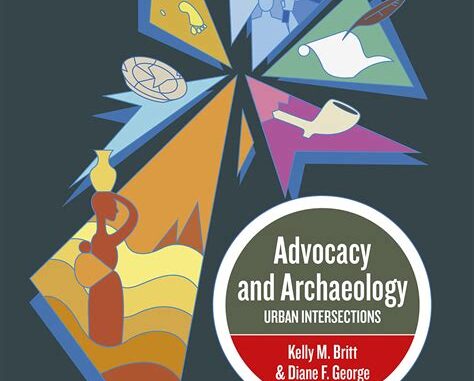
By Daniel Afanasyev
The Ethyle R. Wolfe Institute for the Humanities and the Department of Anthropology at Brooklyn College hosted “Advocacy and Archaeology: Present Thoughts” on Wednesday, May 8. This was the final installment in the 12-part “New Books by BC Faculty Event Series.” This discussion was centered around “Advocacy and Archaeology: Urban Intersections,” co-edited by BC professor of anthropology Kelly Britt, and the role of activism in the protection and preservation of historical artifacts, especially in urban settings.
Speakers of the event included co-editors Britt and Fordham University adjunct professor Diane George, along with collaborators Margaret Purser, Sonoma State University Professor Emerita, and Elizabeth Meade, a NYC-based Archaeologist.
The authors defined advocacy as “an effort to make the world a more just place through direct and indirect actions concerning archaeological resources.” To learn of the different experiences the speakers had with advocacy, Britt proceeded by asking each of the speakers how they view advocacy and activism within the field of archaeology.
Purser began by tracing the advocacy element to the beginning of the field when archaeologists began as advocates for resources in the late 1950s and early 1960s. In the 1970s, this advocacy expanded to include people and histories that were either missing or misrepresented in the historical narrative.
“We sort of claimed that as our birthright as a field, and then we evolved from that to where many of the papers and chapters in this volume are, which is we’ve gone from being archaeologists who were advocates for people in the past, to advocates working with communities in the present using archaeology as a means to restoring erased history,” Purser said. “And we’re not doing it as the greater authority in the white lab coat, but we’re doing it with communities.”
Purser’s second point was that archaeologists should not be so much concerned exclusively with the act of uncovering artifacts, as being in the “archaeological habit of mind” when working directly with communities.
“It’s the doing of archaeology in the service of the community, that’s how archaeology and advocacy are increasingly linked, because though we may be directing and advising that process, it is not our process alone,” Purser said. “That is a revolutionary shift in our field that ties advocacy and archaeology together, not just in terms of what happens to the data and how it’s interpreted, but in the act of recovering the past in the present for a different future.”
Meade spoke about completing her dissertation project on documenting and mapping historic period cemeteries in NYC. In the process, she became acquainted with the nature of urban areas and the frequency with which human remains get disturbed through constant development and redevelopment.
“My project was really intended to reclaim these sites, bring them back to the fore so that if they are accidentally disturbed, we can at least help bring descendant communities in faster,” she said. “Through these efforts of trying to generate more public recognition, it is a way of being both an advocate for the deceased population by protecting their actual remains, and serving as an advocate for their descendants living in the present and trying to relink them.”
Additionally, when archaeologists work as advocates, they are able to shed a light on the underlying problems affecting both living people and deceased populations. In Meade’s work, because the existing laws that protect human remains do not always help the archaeologist do their work, part of the job becomes figuring out where advocacy fits within with the current project.
“It’s essentially learning and building your own skillset to look and see what might need to be revealed […] and sometimes there are people that don’t want you to report something, so it’s a matter of knowing when and where to speak up and how to sneak in advocacy and really just be willing to stick up for anything you feel strongly about,” Meade said.
Purser highlighted the unique position that the advocacy element of archaeology finds itself in, and the opportunity to make substantial change outside of its field.
“It’s evolving, this perspective and this idea that you can’t separate archaeology and advocacy anymore,” Purser said. “All that is going to push us in the direction of being more articulate and more sophisticated with this kind of advocacy.”
Current CUNY students can digitally access the volume at https://libguides.brooklyn.cuny.edu/wolfe2023/newbooksbyfacultyspring24
